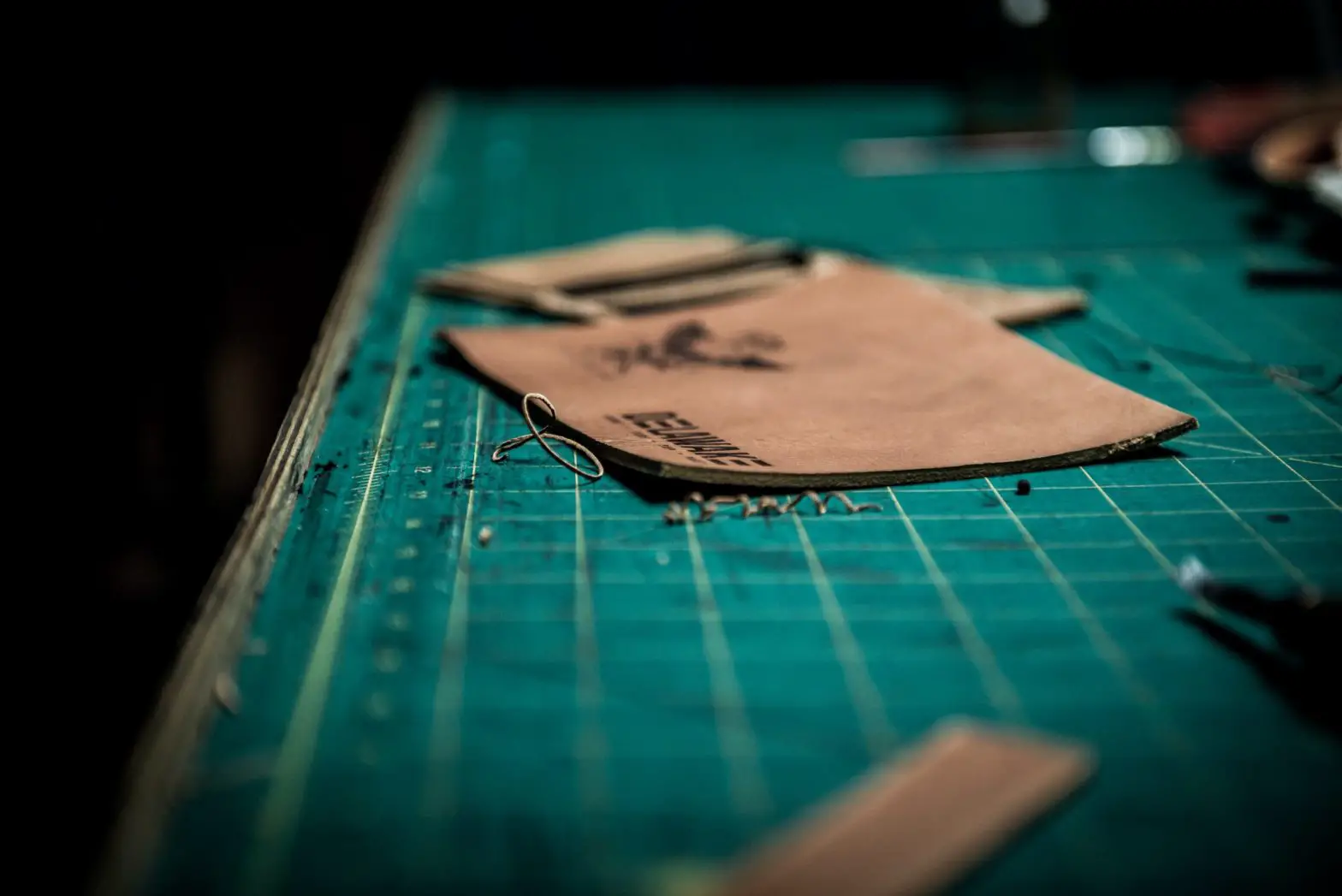Table of Contents
*This post may contain affiliate links. As an Amazon Associate we earn from qualifying purchases.
Don’t feel daunted if you need to perform a little leather repair in your vehicle. If your upholstery has a hole, tear, or crack, it’s not the end of the world because you can fix it. With a little know-how and a couple of simple tricks, you can DIY restore your leather upholstery without the need for expensive replacements.
Leather Repair
You can easily tackle minor damage to your leather car seats yourself without facing expensive professional costs. Small tears, cracks, and holes mar the beauty of your vehicle interior, but with a little know-how, you can DIY it back to nearly new.
Leather repair kits offer a quick and easy solution for easy leather repair. Alternatively, you could use leather patches or liquid leather to banish any unsightly damage. As long as you follow the manufacturer’s instructions and follow our simple guide, you can’t go wrong.
However, it is worth noting that significant rips and tears won’t benefit from a DIY approach, and you may have to seek the services of an upholstery specialist.
Leather Repair for Your Car

You could easily perform some DIY magic with a few simple tricks to restore your leather car seats. Finding small holes and tears feels annoying, and the thought of how much it may cost to repair the leather may leave an uncomfortable taste in your mouth. However, we have a few easy solutions for you to consider.
Using a leather repair kit
A leather repair kit is a perfect solution for banishing small holes and tears. However, it remains vital to choose a kit where the colorant matches your leather. Some car manufacturers offer repair kits that match their leather exactly, so it is worth approaching them before starting. Alternatively, you may purchase many different leather repair kits from automotive stores and online.
Preparation remains the key
As with any DIY job, the area’s preparation before you begin the repair gives the best results. Use a mild soap or leather cleaner to remove any dirt and grime from the upholstery before you start your repair. Allow the leather to dry before you continue.
Short back and sides
If the hole or tear has ragged edges, use a sharp pair of scissors to tidy up the edge. Cut away any loose threads and outwardly curling leather.
Backing cloth
Most leather repair kits come with a backing cloth, which you slip behind the tear and glue into position. Glue the leather’s edges to the backing cloth but be careful not to get any glue on the leather’s surface. Allow the glue to dry before you continue.
Layering
Using a palette knife, build up the filler layers while allowing each layer to dry before applying the next. You want to allow the filler to slightly overlap onto the leather surface itself while thoroughly covering the backing cloth. Don’t be tempted to fill the gap in one go. Thin layers create the best repair.
Sanding down
Use a fine-grit sanding block to sand down the layer until it feels flush to the leather. However, don’t sand too much of the surrounding leather. You want a smooth finish that looks and feels level with the leather upholstery without scuffing the existing material too much.
[amazon bestseller=”leather repair patch kit” items=”3″]
Finishing
Wipe away any residue and ensure the repair dries completely. Use a clean cloth to apply the colorant, building the color up in layers if necessary until you achieve the desired finish. Once the colored patch dries, apply the leather sealant using a clean cloth on the filled area and surrounding leather to prevent the color from rubbing off.
Using a leather repair patch
When buying your leather repair patch, ensure that you match the color of your upholstery. Alternatively, you can use a little leather dye to alter the color to the desired tone.
You may find some excess leather beneath your seats. If so, cut away enough to use for your repair. As long as you take the leather from an unseen area, no one will be any the wiser, and you may then achieve the perfect color and texture match.
Prepare the patch and surface
Cut the patch to size, making sure it covers the hole or tear and slightly overlaps the leather. Before you apply the patch, ensure you clean the leather to remove any dirt so that the patch adheres to the leather correctly.
Wax paper trick
Place a piece of wax paper behind the tear to prevent the glue from hardening the foam inside the seat. If you have a self-adhesive patch, follow the manufacturer’s instructions to apply the leather.
Alternatively, use a proprietary glue suitable for bonding leather. However, use the glue sparingly, ensuring you apply the adhesive to the patch where it comes into contact with the existing leather upholstery to form a secure bond.
Allow the repair to dry before you sit on the upholstery.
An important note
Keep in mind that if you use a leather patch, it may sit slightly proud of the existing upholstery. So, the patch may stand out from the rest of the leather and never truly vanish into the seat. Plus, no matter how well you stick down the patch, the edges always remain susceptible to curling. If in doubt, consult an upholstery professional.
Liquid Leather
Liquid leather is a combination of filler with an adhesive compound and comes in various colors, making sure you match the color the best you can. Some kits allow you to mix and tint your tones. On the other hand, you could use a clear variety of liquid leather that seals the rip for small tears.
Important tip
Before you apply the liquid leather, test the color in an inconspicuous area to make sure it matches the existing upholstery. Most kits contain a color toner for you to adjust the color, as necessary. Also, clean the area thoroughly before using a mild solvent to remove any residue. Leave the upholstery to dry completely before moving to the next stage.
Limitation
Liquid leather may not necessarily repair rips and holes. When choosing a method of leather repair, it remains vital to use the correct type of repair. Liquid leather helps upholstery suffering from cracks and crevices. Ultraviolet light causes the leather to dry out and crack, and liquid leather proves the ideal solution to the problem.
Apply the liquid leather
Apply the first layer after diluting the liquid leather by 30 percent with water. Work the solution into the cracks and wipe away any excess with a clean cloth. Work in small circular motions to evenly distribute the solution but work rapidly to avoid dry edges. Allow the area to dry before applying the next layer, building up the layers gradually until you achieve the desired finish and color.
The application of the liquid leather evens out the cracks but may affect the color of the upholstery.
[amazon bestseller=”liquid leather kit” items=”3″]
The final layer
Use the liquid leather at full strength to apply the final coat. However, wipe the liquid leather over the entire seat to ensure an even color that completely blends the repair. The cracks may disappear, and as long as you use the correct color, the upholstery may look new.
Finishing touches
Once the liquid leather is dry, use a leather conditioner to help prevent any further cracking. The conditioner enhances the leather’s look and protects the surface to restore it to its natural glory.
Prevention Is Better than Cure
Ultraviolet light damages leather upholstery and causes it to crack and fade. Once the leather starts to break, it can tear and deteriorate rapidly. However, use these neat tricks to help prevent ultraviolet light damage.
Sunshade
Use sunshades on your windows to block out any harmful rays. When parked, cover the windshield with a sun protector and consider using screens on the back-seat windows when traveling.
Leather care
Cleaning and conditioning your leather upholstery can help to keep the material soft and supple. When leather dries out, it is susceptible to cracking and tearing, so condition every couple of months helps to keep your upholstery in tip-top condition.
Leather Repair Explored
We all like our car upholstery to look good. Cracking upholstery or minor tears and rips need not become a problem when you follow these simple hints and tips. However, if in doubt, consult an upholstery professional, especially for significant leather damage.
[amazon bestseller=”leather conditioners” items=”3″]
Leather car repair kits offer a cost-effective solution to repair small rips, holes, and tears. As long as you use the correct color and take your time, the repair may look invisible. Leather patches provide an excellent solution for more significant repairs, though the patch may stand out from the rest of the upholstery.
Ultraviolet light causes the most damage and may result in the leather drying out and cracking. Liquid leather offers the ability to repair the cracks, even out the color, and restore the leather’s natural beauty. However, using sunscreens and regularly conditioning the upholstery may help prevent cracking.
Have you ever repaired your leather car seats? Perhaps you have some handy tips and tricks that worked for you. Why not share your experience with us by commenting below?

Sean Kerr lives in Cardiff, Wales, and is a published author with over 10 novels to his name so far and still counting. As well as writing his next bestseller, Sean also runs a successful jewelry-making business and sells his creations online.

